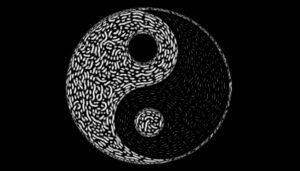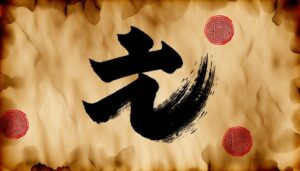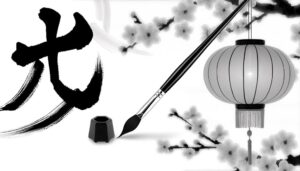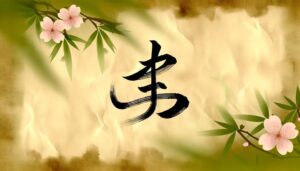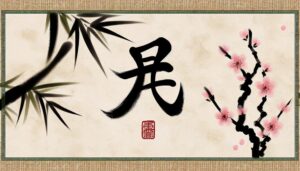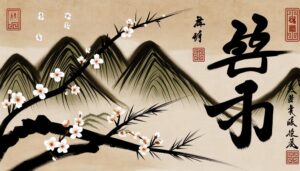Chinese Symbols for Love and Strength: What Are They?
The Chinese symbols for love (爱) and strength (力) hold significant cultural and historical relevance. The love symbol, central in Confucian and Taoist texts, reflects deep emotional bonds and familial devotion.
The strength symbol represents physical and moral resilience, widely celebrated in classical literature and art. These characters have evolved over millennia, ingraining themselves within Chinese civilization and maintaining their timeless importance.
Today, they are cherished in calligraphy, personal adornment, and popular art forms, embodying the profound philosophical and emotional heritage of Chinese culture. Understanding these symbols opens a gateway to appreciating ancient wisdom and contemporary applications.
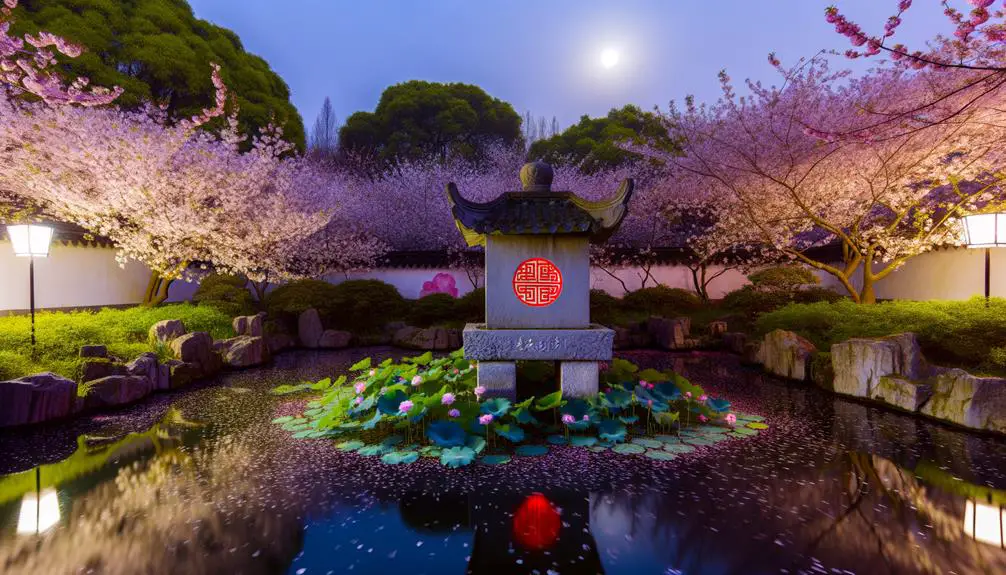
Key Takeaways
- The Chinese symbol for love is written as 爱 (ài).
- The Chinese symbol for strength is written as 力 (lì).
- These symbols have rich historical and cultural significance in Chinese philosophy, literature, and art.
- They are popular in tattoos, jewelry, and home decor for their profound meanings.
- The symbols reflect important Chinese values: 爱 (ài) for emotional bonds and 力 (lì) for resilience.
Historical Origins
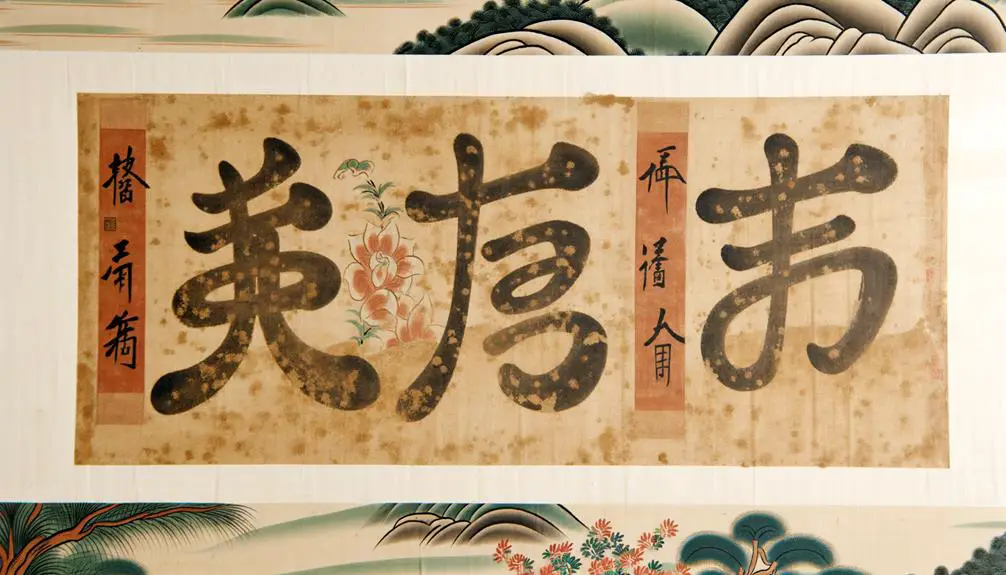
Tracing the historical origins of the Chinese symbols for love (愛) and strength (力) reveals their deep-rooted significance in ancient Chinese philosophy, literature, and art.
The character 愛 has been central in Confucian and Taoist texts, reflecting the virtue of benevolence and familial devotion. Artistic depictions often emphasize the nurturing aspects inherent in the concept of love, underscoring its cultural importance.
Conversely, 力 embodies the essence of physical and moral fortitude, frequently appearing in classical literature as a symbol of resilience and determination.
These symbols are not mere linguistic constructs but embody profound cultural values that have shaped societal norms and personal virtues throughout Chinese history, making them integral to understanding the broader cultural and philosophical landscape.
Etymology and Evolution
The etymology and evolution of the Chinese symbols for love (愛) and strength (力) reveal a complex interplay of linguistic development and cultural adaptation, reflecting shifts in societal values over millennia.
The character for 'love,' 愛, originally comprised elements representing a heart within a hand, symbolizing a deeply felt and active emotion. Over time, its composition evolved to reflect nuanced emotional connections.
In contrast, the character for 'strength,' 力, has remained relatively unchanged, denoting physical power and resilience with its depiction of a plow—a prime tool of labor in ancient agrarian societies.
These characters not only trace linguistic shifts but also mirror the cultural importance placed on emotional bonds and physical endurance in Chinese civilization.
Symbolism in Literature
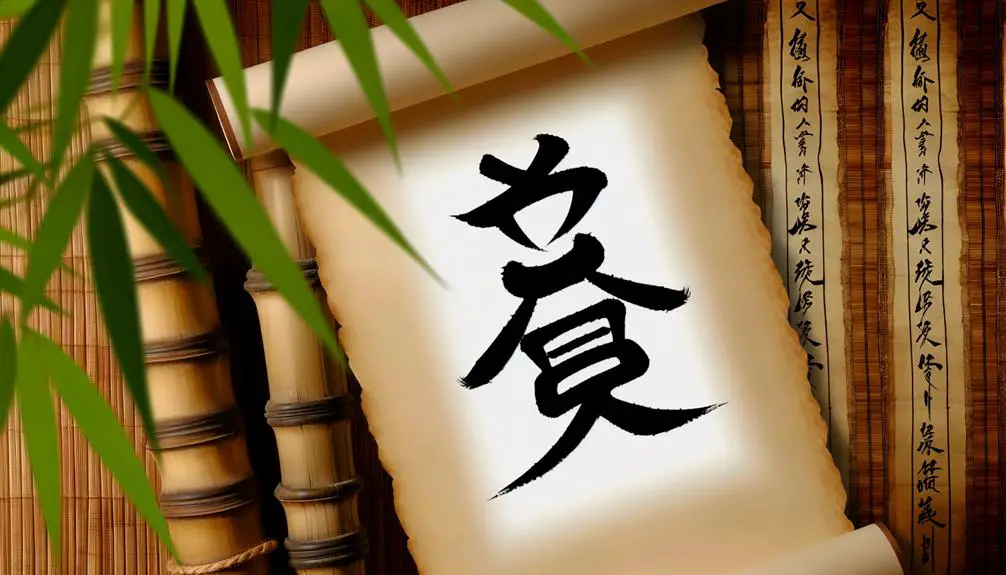
In literature, the Chinese symbols for love (爱) and strength (力) are not merely linguistic elements but powerful metaphors that encapsulate emotional depth and resilience.
These symbols often serve as a conduit for exploring complex human experiences and societal values, revealing the intricate interplay between individual emotions and cultural narratives.
Metaphorical Significance Explored
Literary works often imbue the Chinese symbols for love (爱, ài) and strength (力, lì) with profound metaphorical significance, enriching narratives with layers of cultural and emotional depth. Scholars and authors utilize these symbols to convey intricate themes and universal truths.
The metaphorical significance of these symbols can be examined through:
- Character Development: Characters embodying love and strength often undergo transformative journeys, reflecting inner resilience and relational bonds.
- Cultural Context: These symbols serve as gateways to understanding traditional Chinese values, offering insight into historical and contemporary societal norms.
- Thematic Resonance: The interplay of love and strength within narratives enhances thematic complexity, providing a nuanced perspective on human experiences and relationships.
This exploration underscores the timeless, universal appeal of these powerful symbols.
Emotional Depth Conveyed
How do Chinese symbols for love (爱, ài) and strength (力, lì) encapsulate profound emotional depth within literary narratives? These symbols carry significant weight in literature, embodying universal themes and evoking nuanced emotional responses.
| Symbol | Emotional Depth |
|---|---|
| 爱 (ài) | Represents unconditional devotion, often depicted through sacrificial acts and deep connections. |
| 力 (lì) | Embodies resilience and inner fortitude, essential in character development and overcoming adversity. |
| 爱 (ài) | Serves as a motif for relational dynamics, exploring the complexities of human affection. |
| 力 (lì) | Illustrates the struggle for survival and personal growth. |
| 爱 (ài) | Highlights vulnerability as a strength, enriching narrative arcs. |
These symbols transcend mere words, adding layers of meaning to literary works, making them timeless and universally resonant.
Cultural Contextualization Insights
Why do the Chinese symbols for love (爱, ài) and strength (力, lì) hold such profound significance in literature, reflecting deeply rooted cultural values and philosophical tenets?
These symbols encapsulate essential aspects of human experience, resonating through literary works as they embody both emotional and physical dimensions of existence. The connection to Confucianism and Daoism further amplifies their importance.
Consider their literary significance through:
- Character Development: Authors often use these symbols to illustrate a character's journey, growth, and resilience.
- Thematic Exploration: Themes of enduring love and inner strength are central to many narratives, providing universal resonance.
- Cultural Reflection: These symbols offer insights into quintessential Chinese ideals, highlighting the importance of harmony and personal fortitude.
This intersection of symbolism and literature provides profound cultural contextualization.
Calligraphy Art Forms
Calligraphy art forms in Chinese culture, particularly those depicting symbols for love and strength, are revered for their intricate brushwork and profound symbolism, reflecting centuries of aesthetic and philosophical refinement.
The characters for love (爱) and strength (力) are not merely textual representations but are imbued with layers of meaning that resonate deeply within the cultural psyche. Mastery of these calligraphic forms requires not only technical prowess but also a deep understanding of the principles of balance, harmony, and expression.
Each stroke, whether bold or delicate, contributes to a composition that communicates more than its literal meaning, offering insight into the artist's emotional and intellectual engagement with these timeless concepts.
This art form remains a demonstration of the enduring power of Chinese cultural heritage.
Usage in Daily Life
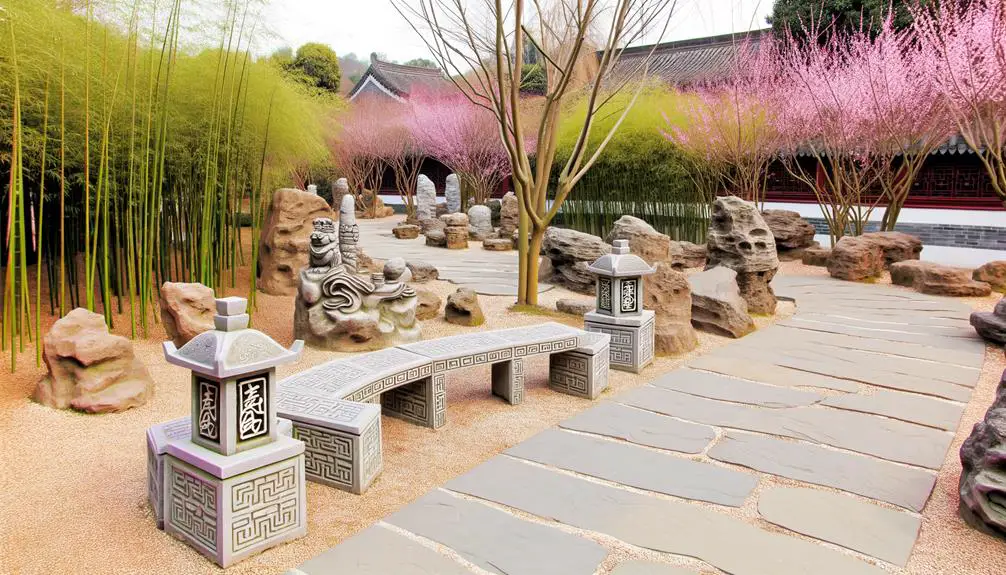
In contemporary settings, the Chinese symbols for love and strength have transcended traditional art forms to become prominent features in personal adornment and interior design.
These characters are frequently incorporated into tattoo and jewelry designs, serving as a confirmation of their enduring cultural resonance and aesthetic appeal.
Additionally, they are often utilized in inspirational home decor, where they imbue living spaces with profound philosophical significance and emotional depth.
Tattoo and Jewelry Designs
Embodying profound cultural significance, the Chinese symbols for love (爱) and strength (力) have become popular motifs in both tattoo art and jewelry designs, seamlessly merging aesthetic appeal with deep-rooted meanings. These symbols hold a timeless allure due to their elegant calligraphy and the universal values they represent.
Their usage in contemporary designs can be categorized as follows:
- Tattoo Art: Many individuals choose these symbols to express personal values and philosophies, often integrating them with other meaningful elements.
- Necklaces and Pendants: Jewelry designs featuring these characters serve as daily reminders of cherished virtues, providing both beauty and inspiration.
- Bracelets and Rings: These accessories combine traditional Chinese artistry with modern fashion, symbolizing an enduring connection to cultural heritage.
This integration enhances personal and aesthetic significance in everyday life.
Inspirational Home Decor
Integrating the Chinese symbols for love (爱) and strength (力) into home decor can infuse living spaces with cultural depth and motivational significance. These symbols, when artistically rendered on wall hangings, cushions, or ceramics, serve as daily reminders of essential virtues.
The character 爱, representing love, can enhance areas dedicated to family gatherings, fostering warmth and connection. Conversely, 力, symbolizing strength, is well-suited for personal spaces like home offices or study rooms, promoting resilience and determination.
The aesthetic appeal of Chinese calligraphy, combined with its profound meanings, offers a unique blend of beauty and inspiration. Such decor not only enriches the ambiance but also bridges cultural heritage with modern living, creating a harmonious and empowering environment.
Representation in Media
How have the Chinese symbols for love and strength permeated various forms of media, shaping cultural narratives and artistic expressions globally?
These symbols have become iconic, resonating deeply across diverse platforms. Their integration can be observed in:
- Cinema and Television: Chinese characters for love (爱) and strength (力) are frequently depicted in films and series, often to invoke themes of resilience and emotional depth.
- Literature and Graphic Novels: These symbols are employed to add cultural richness and philosophical undertones to storytelling.
- Fashion and Merchandise: Clothing lines and accessories often feature these characters, blending traditional aesthetics with modern design, consequently influencing global fashion trends.
This widespread representation underscores the universal appeal and profound meaning embedded within these Chinese symbols.
Tattoos and Body Art
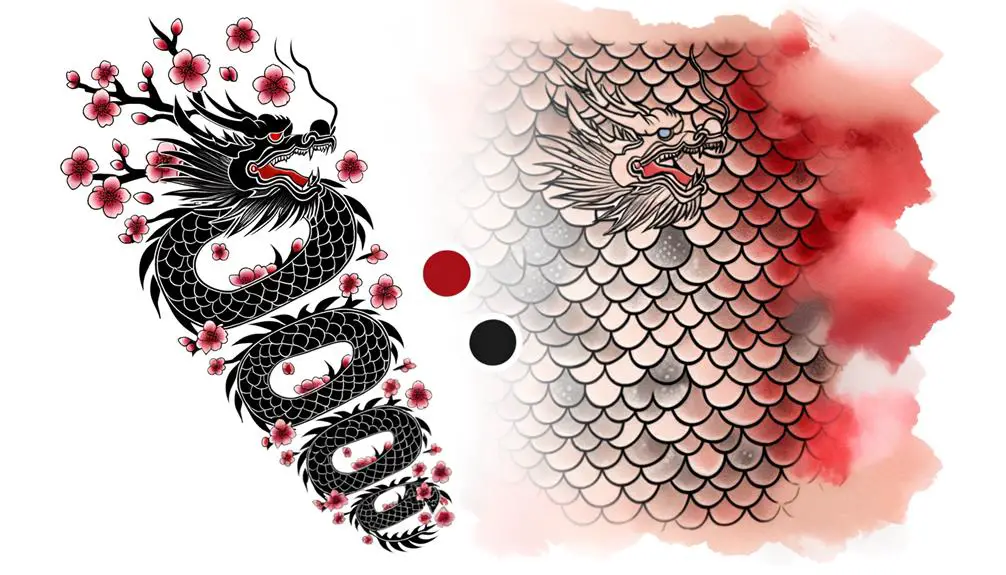
The Chinese symbols for love (爱) and strength (力) have become popular choices in the domain of tattoos and body art, admired for their aesthetic appeal and profound meanings.
Understanding the cultural symbolism behind these characters is essential, as it reflects deep-rooted values and philosophies within Chinese culture.
Additionally, considering the placement of these tattoos can enhance their visual impact and personal significance.
Popular Tattoo Designs
Among the myriad of tattoo designs, Chinese symbols for 'love' (爱) and 'strength' (力) have garnered significant popularity due to their profound cultural resonance and aesthetic appeal. These characters are not only visually striking but also imbued with deep meanings that transcend linguistic barriers. They are often chosen for their elegant simplicity and the powerful messages they convey.
Here are three popular designs incorporating these symbols:
- Single Character Tattoos: A minimalist approach featuring either 爱 or 力.
- Combination Tattoos: Merging both characters to represent a balance of emotional and physical fortitude.
- Integrated Elements: Encompassing additional cultural motifs such as dragons or lotus flowers to enhance the symbolism.
These designs are a reflection of the enduring allure of Chinese script in contemporary body art.
Cultural Symbolism Explained
Exploring the deeper meanings behind tattoo designs, Chinese symbols for 'love' and 'strength' serve as rich repositories of cultural symbolism, offering profound insights into the values and philosophies that have shaped Chinese history and society.
The character for 'love' (爱) encompasses notions of deep emotional connections and compassion, reflecting the Confucian ideals of familial bonds and social harmony.
Meanwhile, the symbol for 'strength' (力) signifies not just physical power but also inner resilience and moral fortitude, echoing Daoist and Buddhist teachings on personal growth and perseverance.
These symbols, when chosen as tattoos, are not merely decorative but are imbued with a rich tapestry of meaning that transcends mere aesthetics, resonating deeply with those who embrace their profound heritage.
Tattoo Placement Ideas
Strategic placement of tattoos bearing the Chinese symbols for 'love' and 'strength' can greatly enhance their visual impact and symbolic resonance, offering a canvas where cultural heritage and personal identity converge.
The significance of these symbols can be accentuated by choosing thoughtful locations on the body. Consider the following placement ideas:
- Wrist or Forearm: These areas allow for visibility, providing a constant reminder of the virtues they represent.
- Chest or Ribcage: Positioned close to the heart, these locations symbolize the deep personal significance of 'love' and 'strength.'
- Back or Shoulder Blade: These larger canvases enable more intricate designs, combining both symbols and additional elements like calligraphy or floral motifs.
Each placement offers a unique way to honor these profound concepts.
Cultural Celebrations
Celebrating traditional festivals such as the Spring Festival and the Mid-Autumn Festival offers profound insights into the cultural significance of the Chinese symbols for love and strength.
During the Spring Festival, familial unity and collective resilience are emphasized, reflecting the symbol for love (爱) through shared meals and the symbol for strength (力) through communal activities.
The Mid-Autumn Festival, with its focus on reunion and gratitude, further underscores these symbols. Mooncakes, shared among family members, epitomize love, while the story of Chang'e and Houyi highlights enduring strength and perseverance.
These celebrations not only preserve cultural heritage but also imbue the symbols with tangible, lived experience, ensuring their relevance across generations.
Modern Interpretations
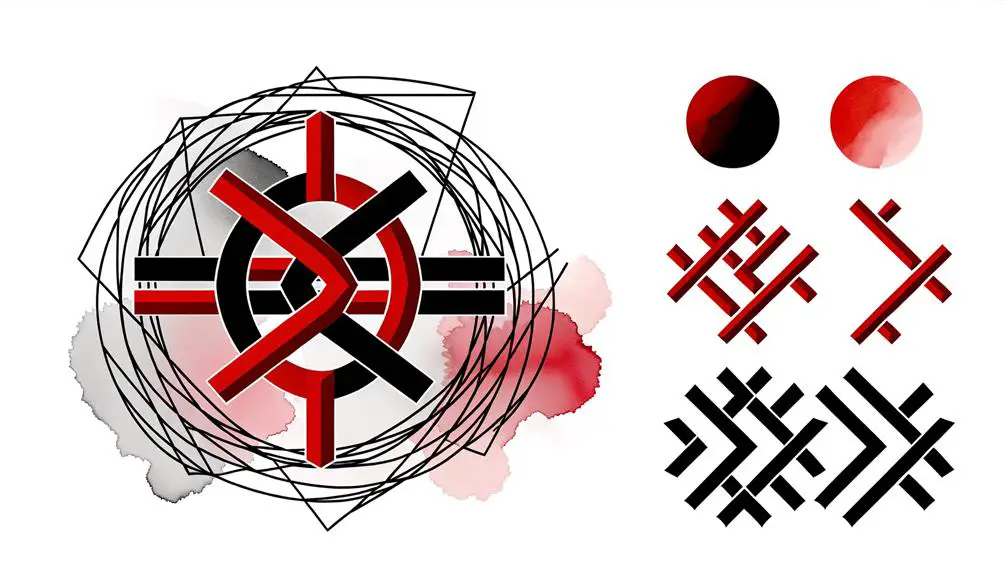
In contemporary society, the Chinese symbols for love (爱) and strength (力) have evolved to take on multifaceted meanings, reflecting personal and collective experiences within a rapidly changing world. These ideograms are now often interpreted through the lens of modern values and technological advancements. Their significance can be seen in various aspects of life:
- Personal Identity: Many individuals tattoo these symbols to signify resilience and emotional depth.
- Digital Communication: Emojis and digital art frequently incorporate 爱 and 力, symbolizing universal sentiments.
- Social Movements: Activists use these characters in campaigns to promote unity and perseverance.
These evolving interpretations highlight the dynamic nature of cultural symbols in today's interconnected society, embodying both historical roots and contemporary relevance.
Global Influence
The Chinese symbols for love (爱) and strength (力) have transcended cultural boundaries, becoming powerful emblems in various global contexts. Their adoption ranges from personal tattoos to corporate logos, reflecting a universal resonance with these fundamental human concepts.
In academia, these characters are studied for their linguistic intricacies and historical significance, offering insights into Chinese cultural philosophy. Internationally, they are often used in art, fashion, and literature to convey profound meanings. Moreover, their integration into digital communication as emojis underscores their global relevance.
This widespread usage highlights the symbols' adaptability and the deep-seated human connection to the ideals of love and strength, making them enduring icons in the global lexicon.
Conclusion
To sum up, the Chinese symbols for love and strength encapsulate profound cultural heritage and enduring human values. Their historical origins and etymological journey reflect an intricate tapestry of linguistic evolution and artistic expression.
Embedded in literature, calligraphy, and daily practices, these symbols transcend mere characters, embodying resilience and affection.
As they continue to inspire modern interpretations and tattoos, their global influence underscores a universal yearning for connection and fortitude, subtly reminding of the shared human experience across cultures.

